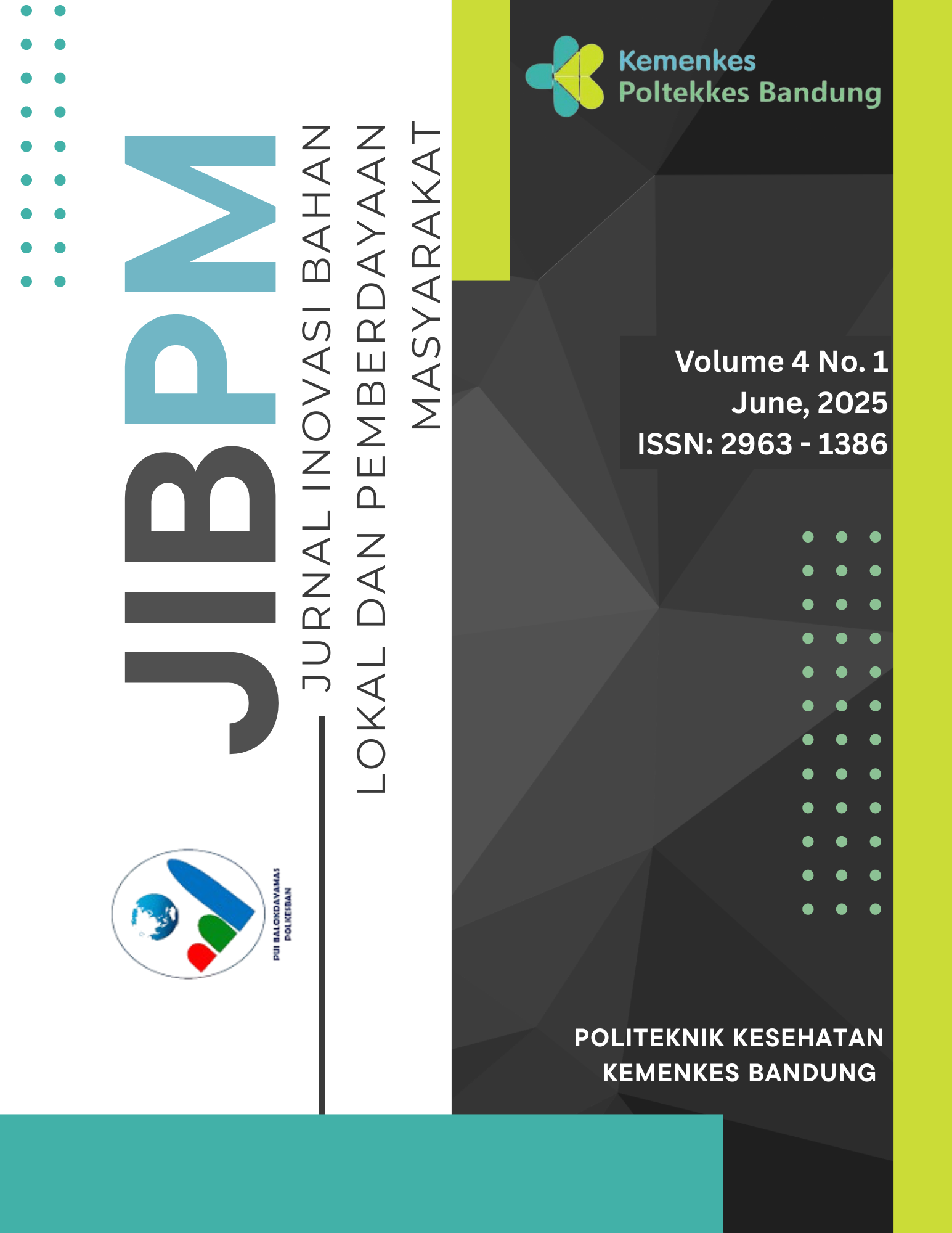GAMBARAN ASUPAN BESI DAN SENG PADA COVID-19 DAN NON COVID-19 MAHASISWA POLTEKKES KEMENKES BANDUNG
DOI:
https://doi.org/10.34011/jibpm.v4i1.3399Keywords:
Iron Intake, Zinc Intake, COVID-19Abstract
COVID-19 is an infectious disease that causes symptoms ranging from mild to severe, caused by the SARS-CoV-2 virus. Inadequate intake of micronutrients such as iron and zinc tends to increase the risk of infection from SARS-CoV-2. This study aims to determine the overview of iron and zinc intake between COVID-19 and non-COVID-19 student groups at Poltekkes Kemenkes Bandung, Cimahi area. The study design was cross-sectional with a total sample of 70 respondents. The sampling technique used was Proportional Random Sampling. Collected data included sample characteristics, COVID-19 status, iron intake, and zinc intake. The data were analyzed descriptively. The results showed that among samples with deficient iron intake, 58.7% had experienced COVID-19 and 41.3% had not (non-COVID-19), while among those with sufficient iron intake, 33.3% had experienced COVID-19 and 66.7% had not. For zinc intake, among those with deficient intake, 66.7% had experienced COVID-19 and 33.3% had not, while among those with sufficient zinc intake, 32.4% had experienced COVID-19 and 67.6% had not. To meet iron and zinc needs, students should increase their intake of these nutrients through food or supplements to boost immunity during the pandemic.




